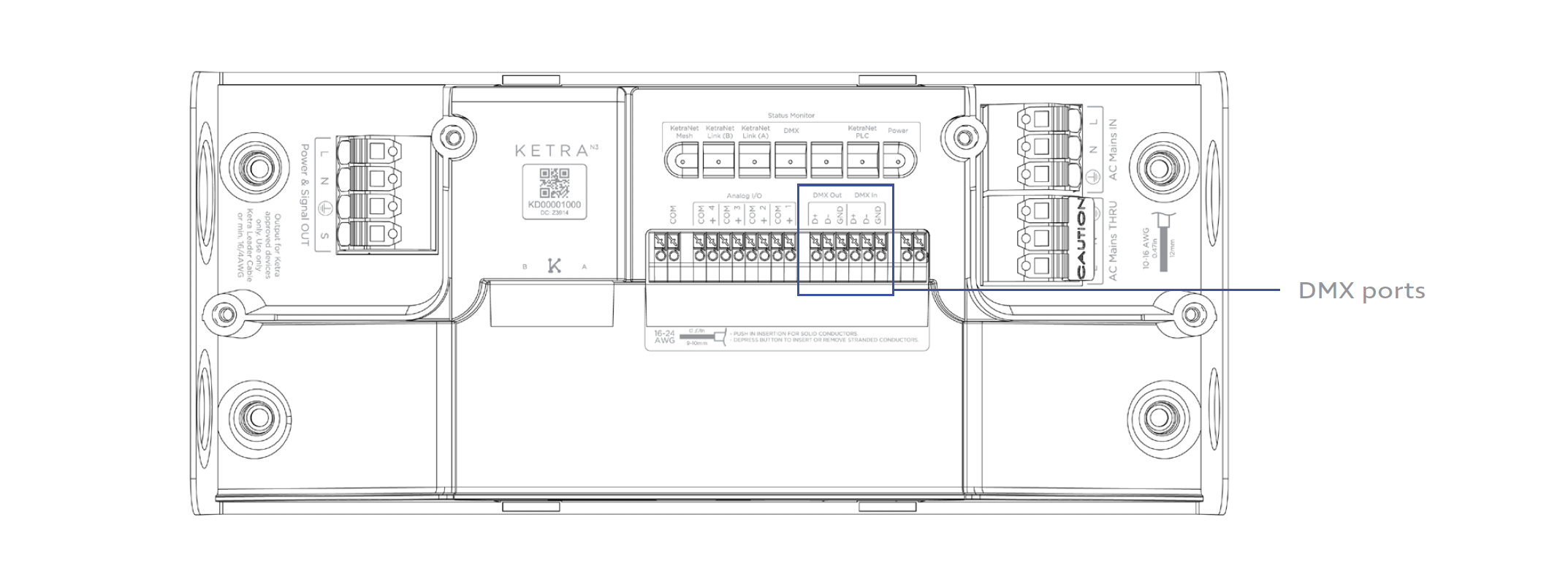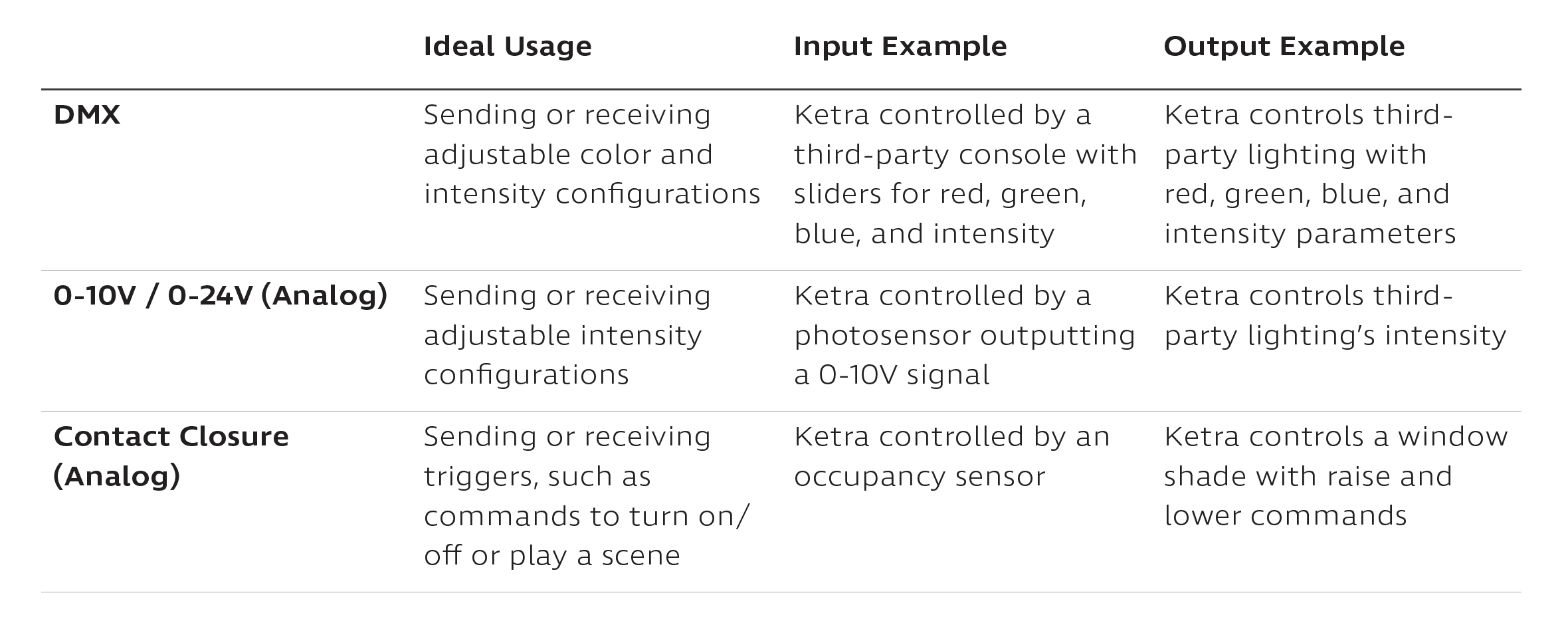About DMX
DMX512 is an industry-standard control protocol, built upon RS485, that has roots in entertainment and theatrical lighting applications. It is easy to use, robust, and low-cost, and has found its way into many applications beyond the theater. As the name suggests, it is a way to send 512 8-bit data values over a single cable.
There are several rules of thumb to follow when physically wiring DMX networks:
- Total run length should not exceed 300m (~1000 feet)
- Maximum number of receivers connected to the cable is 32
- The end of the cable run (farthest from transmitter) should be terminated properly with a 120-ohm resistor
- All products should be connected in a serial fashion, not in star or “home run” topologies
N3 Satellite as DMX Console
The N3 Satellite acts as a bridge between the external DMX system and the Ketra lighting system. Its DMX ports (shown below) can send or receive a full universe (512 channels) of DMX512-A.

An N3 can be configured as DMX master or DMX slave, which determines the directionality of control data.
- DMX master - N3 outputs DMX to a 3rd party device (i.e., Ketra controls external system)
- DMX slave - N3 receives DMX from a 3rd party device and relays it to the Ketra system (i.e., external system controls Ketra)
DMX vs. Analog Control
In addition to supporting DMX input and output, the N3 Satellite separately supports analog input and output, including 0-10V, 0-24V, and sustained contact closures. Each method is useful in different applications.

This app note discusses DMX, not analog integration.
